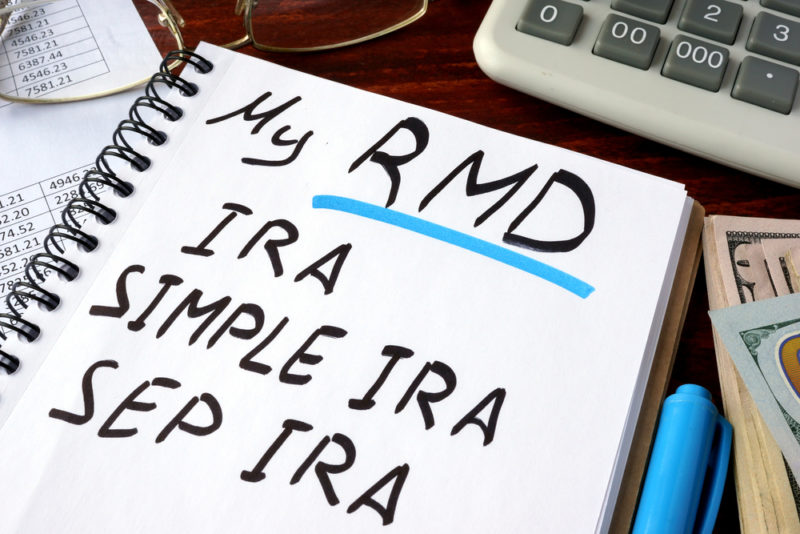My Top 12 End-of-Year Tax Tips
by Steve Lewit

It’s Never Too Late to Be Prepared – and Save
Lurking behind the holiday season and year-end celebrations is the realization that taxes are coming due. Taking some time from the festivities to make sure you are well prepared for taxes can pay off big time, especially with new tax reform rules.
While we are close to the end of 2018, there are steps you can still take to ensure a lower tax bill. Here are my Top 12 Year-End Tax Ideas for you that could put more money in your pocket (and, by the way, also help pay for some of those holiday gifts).
1. Decide If You’re Going to Take the Standard Deduction
Millions of taxpayers who routinely itemized deductions in past years are expected to take the standard deduction in 2018.
That’s because the standard deduction is doubled, while dozens of itemized deductions are repealed, and the state and local tax deduction is capped at $10,000.
It’s important that you know whether you are going to take the standard deduction before making decisions on year-end spending on things that generate itemized deductions.
Otherwise, you make charitable gifts or take elective health care procedures and not derive any benefit as you would if you itemized.
2. Watch Your Charitable Giving
If you are itemizing and planning on giving to charity before the end of the year, remember that cash contributions must be documented to be deductible.
If you are donating property to a charity valued at more then $500, you must attach Form 8283. Giving away a car valued greater than $250, you must have written acknowledgement from the charity which includes a description of the car.
You cannot deduct donations to individuals, social clubs, political groups or foreign organizations.
3. Be Careful with Your Mortgage Deduction
Mortgage interest deductions were lowered in tax reform and may only be applied to $750,000 in debt rather than the prior $1.1 Million. If you have a pre-existing mortgage, check to see if you are grandfathered.

If you are thinking of downsizing your mortgage because it is higher than $750,000, be careful that you don’t lose a valuable deduction by not understanding the grandfathering rules.
4. Max Out Your Retirement Accounts
It’s never to late to increase your contributions into retirement accounts. The 2018 contribution limits are $18,500 for a 401(k) and $5,500 for an IRA (not including catch-up contributions for those 50 years of age and older).
5. You May Want to Defer Capital Gains
If you are going to sell assets that generate large capital gain, how about investing an equal amount into an opportunity zone fund (which must be done within 6 months of the sale).
Tax reform created this tax incentive to encourage investment in areas in need of development. Gains on these investments won’t be realized until they are sold, or by 12/31/2026 at the latest.
And, some gains may be forgiven entirely if they meet the holding period requirements. There are more than 8,000 opportunity zones in the U.S. with growing number of funds for you to consider.
6. Remember Use-It-Or-Lose It Money in Flexible Spending Accounts
You don’t pay taxes on funds you deposit in Flexible Spending Accounts (FSA). That money, however, must be spent on qualified medical expenses before the designated deadline.
Whatever funds you don’t spend before the end of the year (or grace period if you have one), is money left on the table.

Make sure you use this money for unreimbursed medical expenses like eyeglasses, prescription medications, medical equipment or co-pays.
If you have available funds, go see doctors now, instead of in 2019, or buy a year’s worth of medicine now and then use it in 2019.
7. Take Advantage of Tax-Loss Harvesting
How about selling stock that will generate a loss to offset your capital gains before the end of the year? This strategy, called “tax loss harvesting,” can reduce the amount of capital gains subject to tax.
But in any case, you should not let possible tax savings cause you to make a decision contrary to your overall investment strategy or financial needs. While taxes are important, they shouldn’t trump your investment and planning decisions.
8. Beware the Alternative Minimum Tax
The Alternative Minimum Tax (AMT) was originally designed to make sure wealthy people could not use legal deductions to drive down their tax bill. But now, the AMT is increasingly affecting the middle class.
This tax is figured separately from your regular tax liability, but with different rules. Then you have to pay whichever tax is higher.
This is a year-end issue because certain expenses that are deductible under the regular rules—and therefore candidates for accelerated payments—are not deductible under the AMT. State and local income taxes and property taxes, for example, are not deductible under the AMT.
9. Careful with Required Minimum Distributions (RMD)
Did you reach age 70½ this year? If you did you must start making regular minimum distributions from your traditional IRA by April 1 the following the year in.

Failing to take out enough triggers one of the most draconian of all IRS penalties: a 50% excise tax on the amount you should have withdrawn based on your age, your life expectancy, and the amount in the account at the beginning of the year.
Other than the year in which you turn 70½, your RMD must be taken by December. Finally, make sure you elect tax withholding for these distribution so as not to get caught with a big tax bill next year.
10. Consider Roth Conversions
If you’re having a low-income year and are, therefore, in a lower tax bracket, consider converting your IRAs into a Roth, most especially if you think taxes will be going up in the future. Why not pay the lower rate now than pay the higher rate in the future?
Even if this is not a low-income year for you, consider maxing out a tax-bracket with a Roth conversion.
Let’s say you earn $100,000 this year. That put you in the 22% marginal tax-bracket. But, this bracket is quite wide – $77,401 to $165,000 – and you could add another $65,000 for a Roth conversion without putting you in a higher tax bracket. You can then pay the taxes due for the conversion either out of the money you are converting or, preferably, out of other funds.
It is important to note that one of the advantages of Roth IRAs is that the original owner is never required to withdraw money from the accounts. The required minimum distributions apply to traditional IRAs only.
11. Avoid the Kiddie Tax
Congress created the “kiddie tax” rules to prevent families from shifting the tax bill on investment income from Mom and Dad’s high tax bracket to junior’s low tax bracket.
For 2018, the kiddie tax taxes a child’s investment income above $2,100 at the same rates as trusts and estates which are typically higher than rates for individuals.
If the child is a full-time student who provides less than half of his or her support, the tax usually applies until the year the child turns age 24. So be careful if you plan to give a child stock to sell to pay college expenses. If the gain is too large and the child’s unearned income exceeds $2,100, you could end up paying taxes at the same rates as trusts and estates.
12. Get Organized
Perhaps that most obvious tip I can give you is this one – to get organized. I know it’s the last thing on earth you want to do, especially now when you want to kick back, enjoy the holidays and celebrate the new year.

While getting organized is not the most fun thing to do, it might be your most profitable. Remember, every dollar you save in taxes as a dollar in your pocket – to enjoy, to save, to pay off some credit card debt.
Get diligent with your organization and you will be surprised at how many money saving moves you can make that would otherwise have fallen through the cracks.
Now, there’s more to the tax story, a different set of strategies and tips, that I will give you early in 2019 to make sure that you are on track. Until then, I’m wishing you a phenomenal holiday season, a healthy and happy new year, and the richness of life. Of course, I am also wishing you your lowest tax bill ever.
